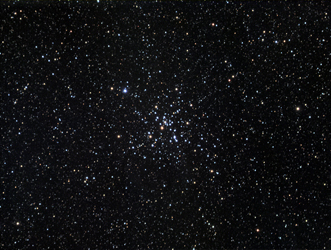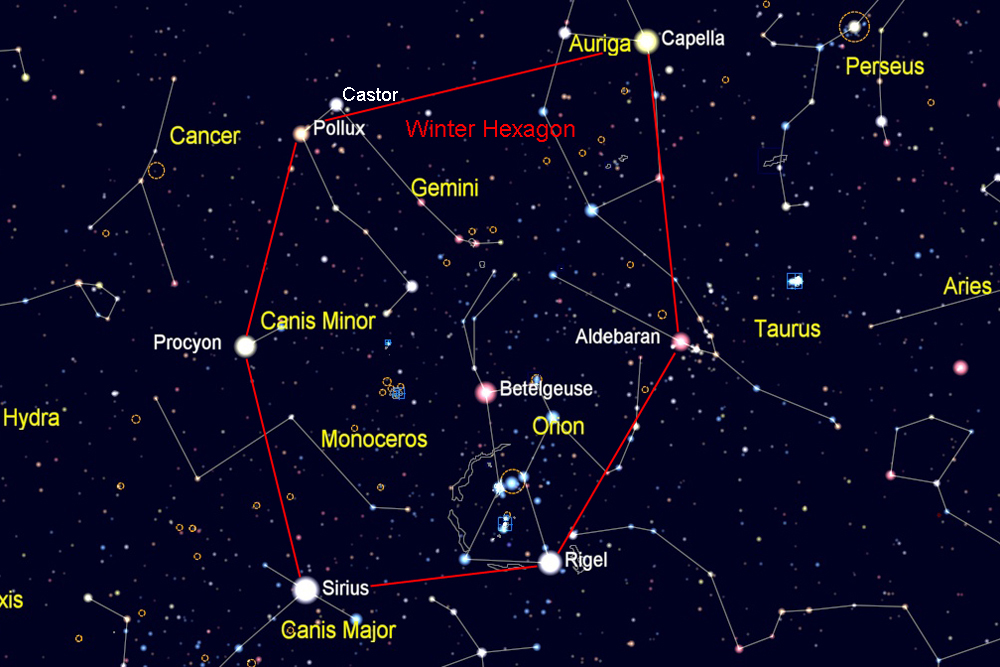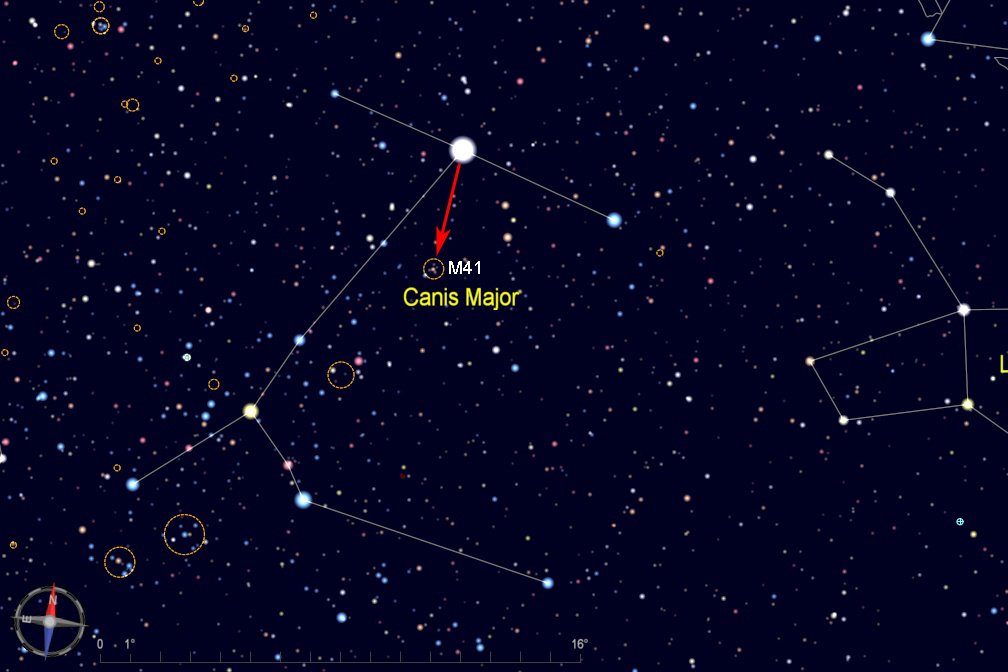
Find the Winter Hexagon, which is composed of six of the brightest stars in the sky--Sirius, Procyon, Pollux, Capella, Aldebaran, and Rigel. On mid-winter evenings, these stars form a large oval stretching from low in the south to nearly overhead. As spring begins, the Winter Hexagon sinks toward the west. The constellation Orion and its bright red star Betelgeuse are inside the Hexagon.
For this star hop, find Sirius, the brightest star in the sky.

Sirius is known as the "dog star," and it forms the neck region of the constellation Canis Major, the big dog. From Sirius, look toward a point 4 degrees to the south, as shown below. Messier 41 may be visible to the naked eye, and it will be easy to spot in binoculars or a finderscope.
